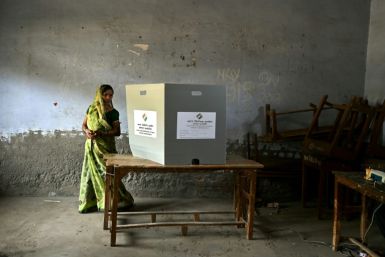Why Washing Your Hands Can Save Your Life
The number of deaths and new cases from the Ebola outbreak since it was first documented in March continues to rise. The World Health Organization reports that as of July 23, 2014 the Ebola virus has caused 672 deaths and infected 1,201 people in Guinea, Liberia and Sierra Leone. The death toll has doubled since mid-June, which then had the death toll at 350.
The virus, which typically kills 90% of those it infects, is transmitted through direct contact with the blood, secretions, organs and bodily fluids of an infected person. The WHO has issued preventive measures to help reduce the risk of infection in people. And one of the simplest ways in which the risk of infection is reduced is the regular washing of hands.
Learn more about when and how to wash your hands and the protection it provides for you and your family.
Why is washing hands important?
Hands are the most exposed body parts to germs. Germs are microbes or microscopic living organisms that can cause disease. Hence, even if your hand appears to be clean, they may still carry germs.
There are a number of ways hands can pick-up germs. When someone sneezes or coughs, the germs that are making them sick are expelled into the air as tiny droplets. When these droplets drop onto your hands and then you touch your eyes, nose or mouth, the germs enter the body and could make you sick. Germs are also transferred onto your hands after handling raw meat, before and after preparing food, and after using the toilet. Touching shared objects, such as the telephone, doorknobs and tabletops that have been touched by an unwashed hand could also cause germs to transfer onto your hand.
If you get in contact with other people without properly washing your hands, you can get them infected with the germs on your hand. Hand-to-hand contact could spread mild conditions like the common cold, as well as severe life-threatening diseases through the spread of germs and viruses, such as Salmonella, E. coli, the influenza virus, the hepatitis A virus, SARS and the Ebola virus.
The Center for Disease Control and Prevention likens hand washing to a "do-it-yourself" vaccination. Washing your hands help prevent diarrhea, respiratory conditions and skin and eye infections by removing the germs.
Teaching people proper hand hygiene also helps them and their communities to stay healthy. The CDC reports that washing hands reduces the number of people sickened with diarrhea by 30% and diarrheal illnesses with people with weakened immune system by 58%. It also reduces respiratory illnesses, such as colds, in most people by 21%.
In addition, washing hands with soap could protect one out of six young children with respiratory disease, such as pneumonia, and one out of three children with diarrhea.
When should we wash our hands?
The CDC lists some situations that require the observance of proper hand hygiene.
Before. During and after handling food
Before eating
After blowing your nose, sneezing or coughing
Before and after treating and dressing a wound
Before and after caring for a sick person
After using the toilet
After changing diapers
After handling pets, pet food or animal waste
After touching or throwing the trash
How should we wash our hands?
The CDC recommends washing hands in a specific way to reduce the risk of infection to ourselves and to others. Follow these steps to thoroughly rid your hands of bacteria and viruses.
Remove any hand or arm jewelry and wet hands with clean running water.
Turn off tap and apply soap.
Build up a lathery rubbing your hands together with the soap. Make sure to lather under the nails, in between the fingers, and the back of the hands.
Scrub hands for at least 20 seconds. This is equivalent to singing the Happy Birth day" song twice.
Rinse hands under clean, running water.
Wipe hands with a clean towel or air dry them.
Use the towel to turn off the faucet so as not to recontaminate your hands. Use the same towel to open the door if using a public bathroom.
What's the best option when soap and water aren't available?
Washing hands with soap and water is the best way to reduce the number of microbes on your hands. When soap and water aren't available, the CDC recommends using a hand sanitizer with at least 60% alcohol. An alcohol concentration between 60-90% is more effective in removing germs.
In addition, non-alcohol-based hand sanitizers may not work well with all types of germs, such as Cryptosporidium and Norovirus; merely reduce the number of germs than kill them; cause germs to develop resistance to the sanitizing agent; and may cause skin irritations.
To use a hand sanitizer,
Apply a small amount of the product on the palm of one hand.
Rub hands together.
Rub the product all over the surface of your hands and fingers until it dries.






